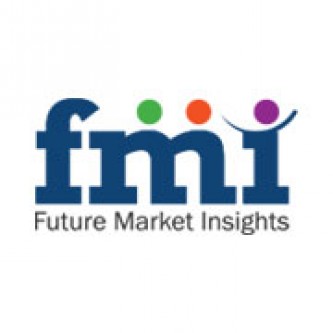The increasing global food security issues always arise challenges for the fertilizer industry to provide improvised and efficient product. Enhanced Efficiency fertilizers are such kind of improvised fertilizers. They efficiently increase the nutrient availability for the plant by reducing the nutrient loss to environment. They either slowly release the nutrients or convert them to different forms for loss reduction. Controlled and slow release fertilizers cover the major share of enhanced efficiency fertilizers.
Control release fertilizers are organically or inorganically coated which control the rate, duration and pattern of the release of the nutrients while slow release fertilizers release nutrients in timely manner without any other control. They are basically nitrogen products decomposed by microbes. The rate duration and pattern of release cannot be controlled as it is done by microbes. According to AAPFCO (Association of American Plant Food Control Officials), there does not exist any official demarcation between slow-release and controlled-release fertilizers and thus are considered as one type–controlled and slow release fertilizers.
Request Free Report Sample@ http://www.futuremarketinsights.com/reports/sample/rep-gb-1559
Global Controlled and Slow Release Fertilizer Market Dynamics
Controlled and slow release fertilizers extend the nutrient intake time and thus provide better performance compared to the conventional fertilizers. The other beneficial factors of using controlled and slow release fertilizers include low labor cost, enhanced nutrient efficiency and low usability risk. Population growth is a major factor for increasing global demand for food. Preference for controlled and slow release fertilizers’ over conventional fertilizers is due to its abilities for the efficient production, low labor cost and application ease over conventional fertilizers. Environmental friendly properties of controlled and slow release fertilizers are creating more market in the world owing to the global green procurement initiatives. Excessive use of fertilizers is the main cause behind fertilizer burn, with controlled and slow release fertilizers this risk is minimized. New technology development for optimum production cost, government initiatives and investment in this sector are expected to play vital role in market extension of controlled and slow release fertilizers. On the contrary, Conventional fertilizers have strong competitive advantage over controlled and slow release fertilizers. Production practices and ease of availability in case of conventional fertilizer is better than controlled and slow release fertilizers. Conventional fertilizers already captured major of the market share. They enjoy the market dominance due to provided subsidies and larger customer base which in turn is big hurdle for controlled and slow release fertilizers’ market. The complex production process is another restraint for the global controlled and slow release fertilizers’ market.
Global Controlled and Slow Release Fertilizer Market Segmentation
Global market for controlled and slow release fertilizers is divided based on the product type, crop type and region. Based on the type controlled and slow release fertilizers are primarily divided into three groups – Organic low-solubility compounds which are further divided as Urea-aldehyde condensation product and chemically decomposing product, Fertilizers with physical barrier controlling the release are further classified as organic and inorganic coated polymer. Organic coated polymer has two different subcategories based on coating material –thermoplastic coated and resin coated. In similar manner inorganic coated polymer is subcategorized into sulphur coated and mineral coated and last type being Inorganic low-solubility compounds.
Visit For TOC@ http://www.futuremarketinsights.com/toc/rep-gb-1559
Based on the crop type, controlled and slow release fertilizers classified as Cereals & Grains, Fruits & Vegetables, Oil seeds and Pulses, Others (Turfs, ornamental).
Global Controlled and Slow Release Fertilizer Market: Regional Outlook
Based on region the global market for controlled and slow release fertilizers is divided into seven key geographical regions which includes North America, Latin America, Western Europe, Eastern Europe, APEJ, Japan and Middle East & Africa. Owing to the better usability, minimal usability cost and low risk factor controlled and slow release fertilizers are showing promising market growth throughout the globe. It is expected to grow with single digit CAGR. North America is the predominant market for controlled and slow release fertilizers, specifically United States being the leader in production of cereals and grains. Europe being the largest producer of Fruits and Vegetables is also expected to witness healthy growth in controlled and slow release fertilizers market. However, due to technology advancement, huge population and arable land shortage, Asia pacific is expected to witness highest CAGR in controlled and slow release fertilizers’ market with Japan, China and India leading the way.
Global Controlled and Slow Release Fertilizer Market Players
Controlled and slow release fertilizers’ market is characterized by presence of several small, medium players. Healthy competition among the small, medium and key players is helping the market growth of controlled and slow release fertilizers’ market. The market players in the controlled and slow release fertilizers are increasing the production capacity, investing in technology & new product development, strategically collaborating with other stakeholders. The key market players in controlled and slow release fertilizers’ market are Kingenta Ecological Engineering Group Co. Ltd., Yara International ASA, Israel Chemicals Ltd., Agrium, Inc., and others.
Speak To Analyst@ http://www.futuremarketinsights.com/askus/rep-gb-1559

